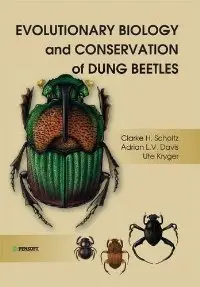Evolutionary Biology and Conservation of Dung Beetles by C. Scholtz
English | ISBN: 9546425176 | 2009 | PDF | 566 pages | 5,9 MB
English | ISBN: 9546425176 | 2009 | PDF | 566 pages | 5,9 MB
For a relatively small group of insects, dung beetles have attracted an inordinate amount of scientific interest over the years. This started with the work of the famous French naturalist Jean-Henri Fabre about 100 years ago, but it the work of Gonzalo Halffter of Mexico, and his colleagues, who first placed dung beetles on the scientific map by the publication of two important synthetic works. The first was published in 1966 ("Natural History") and this was followed by another in 1982 ("Nesting and Breeding Behaviour"). A multi-authored book on dung beetle ecology, edited by Ilkka Hanski and Yves Cambefort, was published in 1991.
These volumes are long out of print and mostly unavailable. In the 18 years since the last book was published there has been a steady stream of research published on dung beetle phylogeny, biogeography, physiological ecology and conservation, fields that were not, or barely treated in the previous books. The current work synthesises and updates most of the major elements covered in those studies, but introduces several novel sections in a phylogenetic approach to the natural history of dung beetles. The aspects covered, in five sections, are the following: evolution and ecological success of dung beetles; physiological and behavioural ecology of dung beetles; phylogeny of the Scarabaeinae; historical biogeography of the Scarabaeinae and its physical and biotic drivers; and, conservation of dung beetles. The content of the book is balanced in such a way that the information contained in it should be of interest to general entomologists, research specialists on dung beetle natural history, insects systematists, students of entomology, agricultural scientists and insect conservationists.



